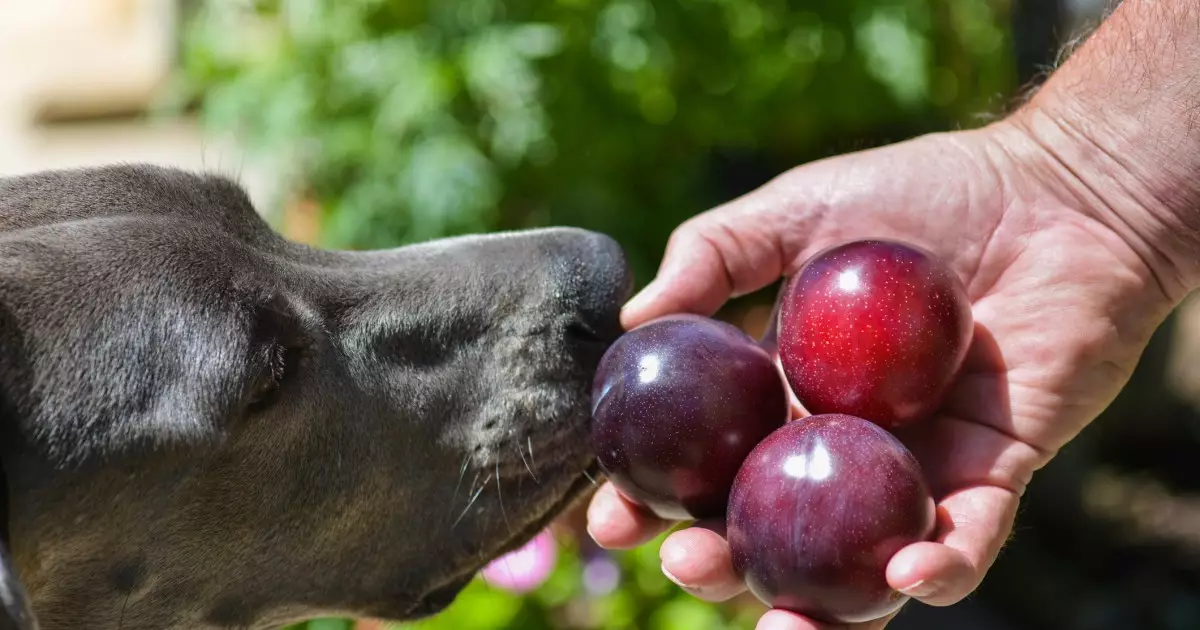As dog owners, we often share little bits of our food with our furry companions. It’s only natural to wonder if the juicy plums we munch on can also be a delightful treat for our pets. However, this innocence can lead us down a path of unexpected danger. While the flesh of a ripe plum might appear harmless to dogs, hidden dangers lie within the rest of the plum plant, making it crucial for pet parents to be informed.
Toxins in Disguise
Plums may look like an innocent snack, but they harbor significant risks for canines. The pit, leaves, and even the blossoms of the plum tree contain toxins, including cyanide, which are undeniably harmful. While dogs might safely nibble on the fleshy part of a ripe plum in small quantities, ingesting any other part can lead to dire consequences. The toxic compounds prunasin and amygdalin further complicate the matter; when metabolized by dogs, these can convert into harmful substances that can cause respiratory distress and gastrointestinal issues.
It is essential to understand that not only the pit poses a threat; the entirety of the plant carries inherent risks. This critical point cannot be overstated for any dog lover trying to keep their pets safe.
Recognizing Symptoms of Plum Poisoning
Suppose your curious canine does manage to snag a plum or two. In that case, it’s vital to be alert to any unusual behavior. Symptoms of Plum poisoning can include tremors, vomiting, and difficulty breathing. These symptoms can progress if unaddressed, leading to severe health complications such as kidney failure. The growth of plum trees in yards or local parks can also be a hidden peril, one that all dog owners need to recognize.
A vigilant eye and knowledge of these symptoms can be lifesaving. If you suspect that your dog has eaten more than just the flesh of a plum, prompt action is necessary. Every moment counts in emergencies, and understanding your pet’s needs will make a difference.
What to Do if Your Dog Ingests Plums
If your dog has managed to eat a plum—including the pit or other toxic parts—immediate knowledge of how to respond is critical. First, try to determine the quantity and parts consumed. If your dog took a bite but did not ingest the pit, the risk may be less severe. However, it’s vital to monitor them closely for any symptoms.
Should a dog display signs of distress or you are uncertain about their state, calling your veterinarian is imperative. Be prepared to provide details about what and how much was eaten; this information can assist the vet in determining the appropriate course of action. Treatment may include the administration of sodium nitrite for detoxification in severe cases.
The Role of Responsible Pet Ownership
Educating yourself about what foods are safe for your furry friends is part of being a responsible pet owner. Furthermore, it involves not only knowing the do’s and don’ts of your dog’s diet but advocating for their safety in various environmental circumstances. Whether you’re enjoying a summer picnic or merely relaxing at home, the safety of your dog should always come first, especially around inconspicuous hazards like plums. By being aware of the hidden dangers that can lurk in your food, you help ensure that every treat shared is a safe one, solidifying the bond of trust between you and your beloved pet.

